
Travel to Big Bend National Park in 2025
Location and Characteristics
Big Bend National Park is located in extreme southern Texas, along the Rio Grande River. The closest towns include Terlingua, Marathon, Marfa, Alpine, Sanderson, Fort Davis and Valentine.
| Big Bend National Park PO Box 129 Big Bend National Park, TX 79834-0129 Phone 432.477.2251 Website of Big Bend National Park at NPS |
Big Bend is one of the largest, most remote, and one of the least-visited national parks in the contiguous United States. The Park encompasses an area of 801,163 acres, and shares the border with Mexico for 118 miles. It is the largest protected area of Chihuahuan Desert topography and ecology in the United States.
From an elevation of 1,800 feet along the banks of the Rio Grande to almost 8,000 feet at the top of the park's Emory Peak, the trails of Big Bend offer experiences, variety, and vistas that visitors love.
The park protects more than 1,200 species of plants, more than 450 species of birds, 56 species of reptiles, and 75 species of mammals.
Big Bend Ranch State Park, although just west of Big Bend National Park, offers a completely different experience with rugged volcanic landscapes and many opportunities for backcountry solitude. It offers 275,000 acres of managed wilderness.
Let's Visit the Park!
The park offers a wide range of things to do and activities, from hiking, biking, camping, fishing, and eco tours.
We have visited Big Bend and have enjoyed its many attractions, tours, trails and outdoor activities. We also visit other nearby attractions in Terlingua, Marathon, Alpine, and Marfa.
Spend a day, or more, and enjoy and explore Big Bend National Park!
| On the road again ... heading this time to Big Bend National Park in Texas! |
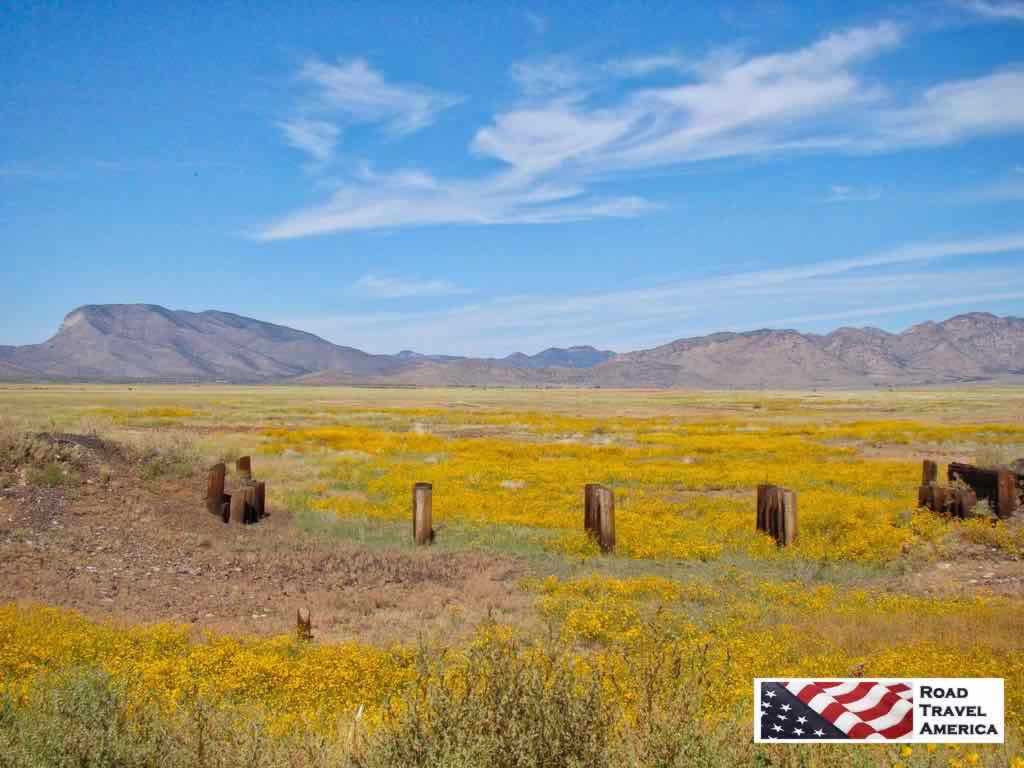 |
| Approaching the wide open expanses of Big Bend National Park |
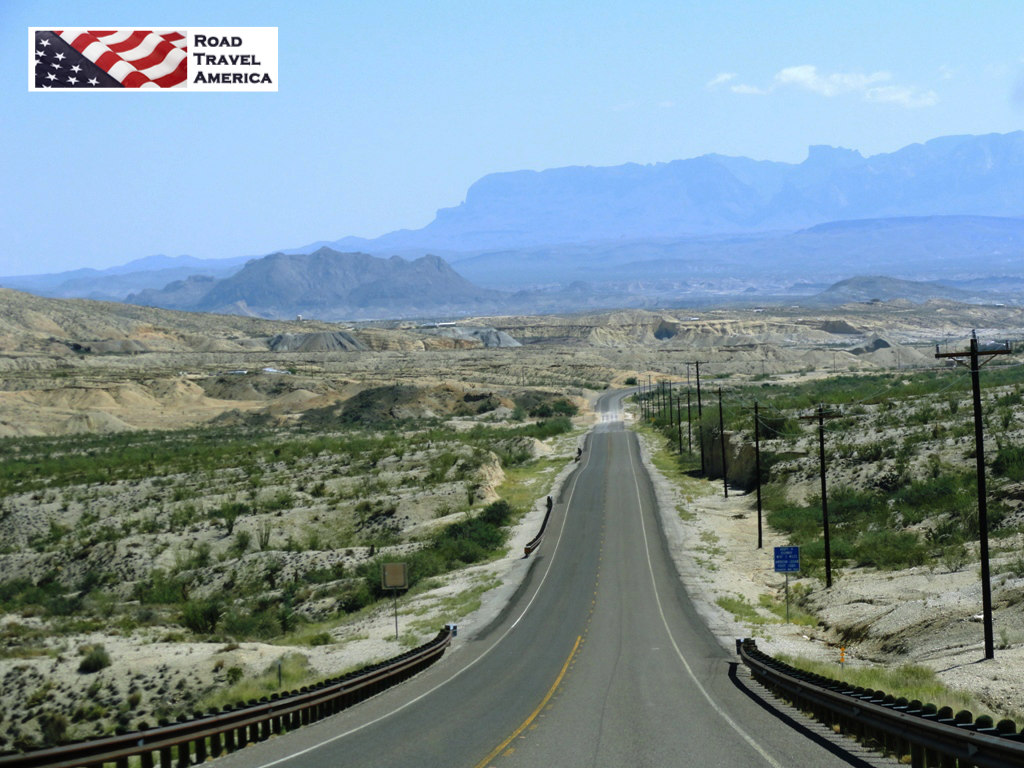 |
| Entrance area at Big Bend National Park ... Rio Grande Wild & Scenic River ... a U.S. Biosphere Reserve |
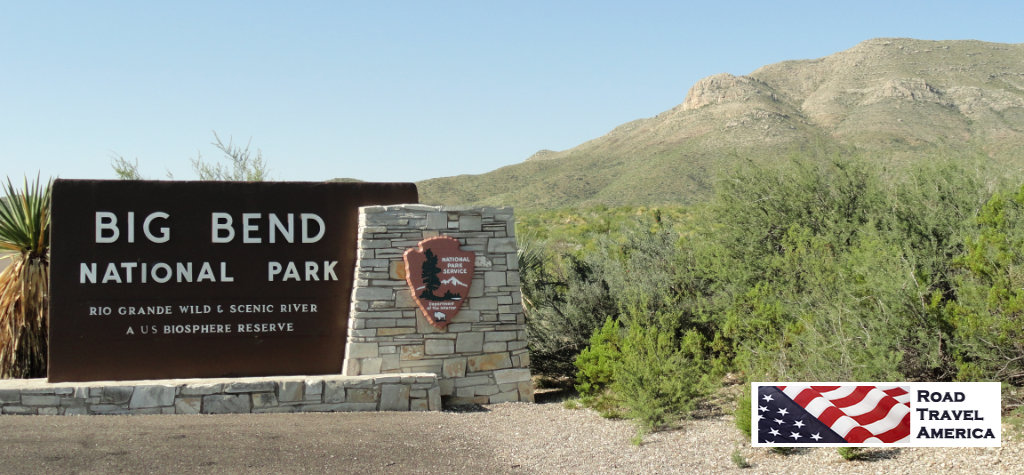 |
What you will see in the Park: Overviews, Vistas and Terrain
| Overview of the Rio Grande River in Big Bend National Park (photo courtesy of the NPS) |
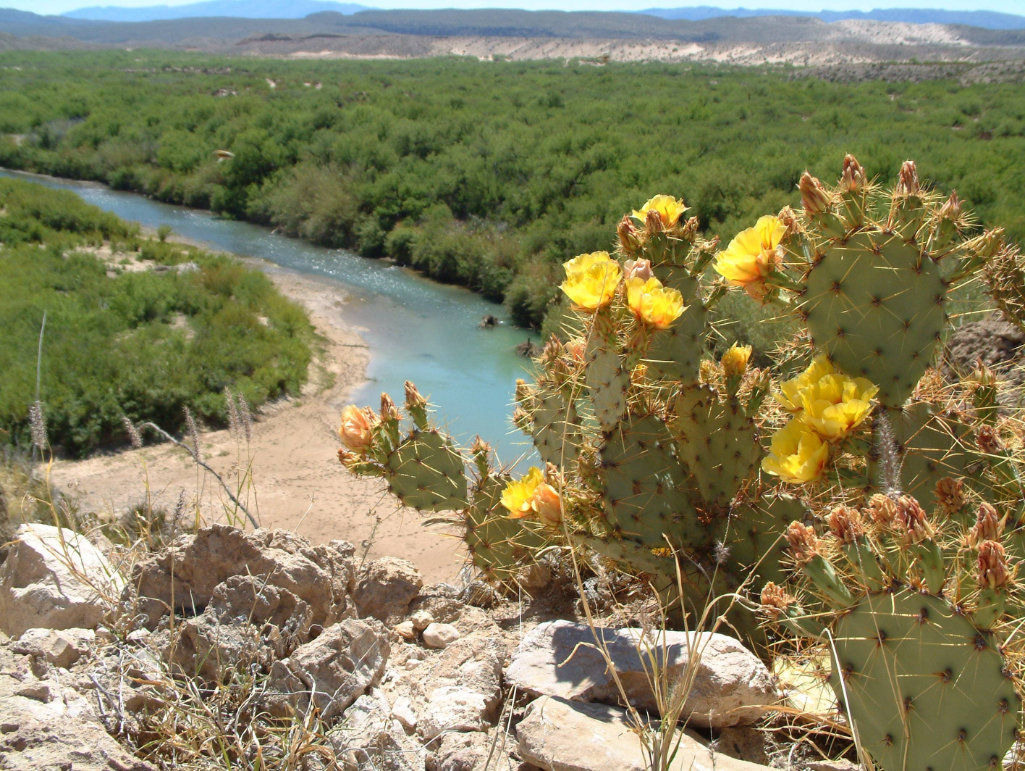 |
| The Rio Grande River meandering through Big Bend National Park (Photo courtesy of NPS) |
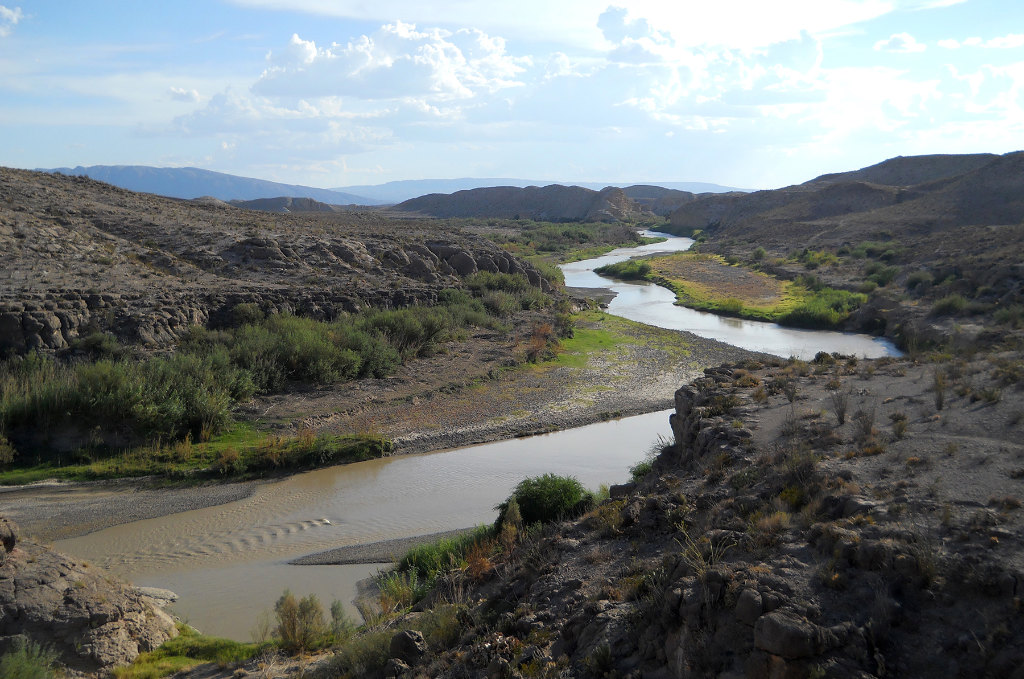 |
"The Window" at Big Bend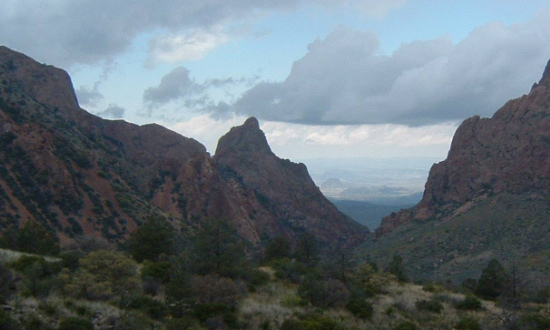 |
Cactus blooming in Big Bend
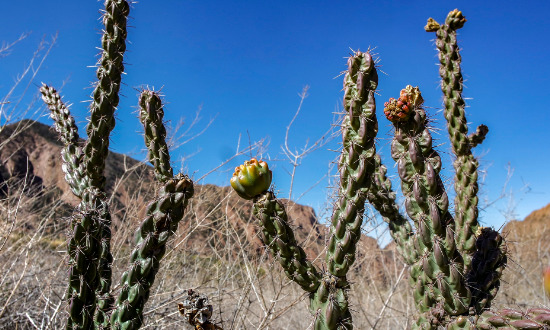 |
Typical terrain at Big Bend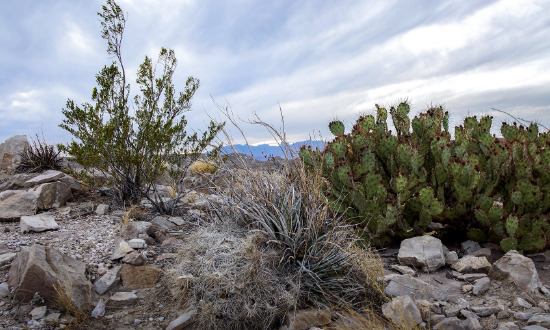 |
Attractions and Visitor Centers in the Park
There is no shortage of activities for individuals, groups, or families to enjoy outdoors in Big Bend. The diverse habitats allow for enjoyable activities ranging from hiking, scenic drives, camping and birdwatching among the mountains and river areas.
While in the park, be sure to check out the Chisos Basin Visitor Center, Castolon Visitor Center, Persimmon Gap Visitor Center, and Rio Grande Village Visitor Center for maps and current park status.
Chisos Basin Visitor CenterThe Chisos Basin Visitor Center includes interactive exhibits on plants, animals, and birds found in the Chisos Mountains. Backcountry and river use permits are issued during normal business hours, and entrance fees can be paid at the visitor center. A Big Bend Natural History Association bookstore is located in the visitor center and restrooms are available around the corner outside the visitor center. A water faucet is available on the east side of the building for filling personal water containers. (Photo courtesy of NPS) |
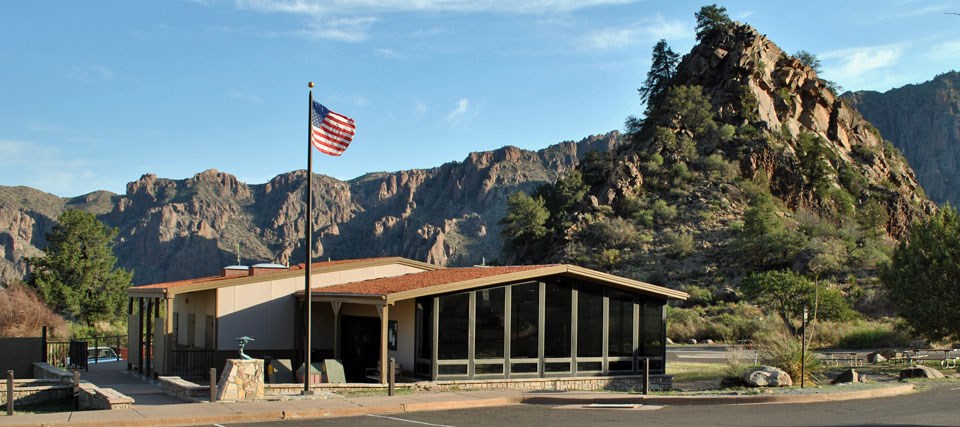 |
Things to do in and around Big Bend... from TripAdvisor
| At the Fossil Discovery Exhibit, visitors can experience the changes to Big Bend's plants and animals, and the world they lived in, through 130 million years of geologic time. |
 |
Map of the ParkShown to the right is a map of Big Bend National Park, courtesy of the National Park Service. click the image to enlarge |
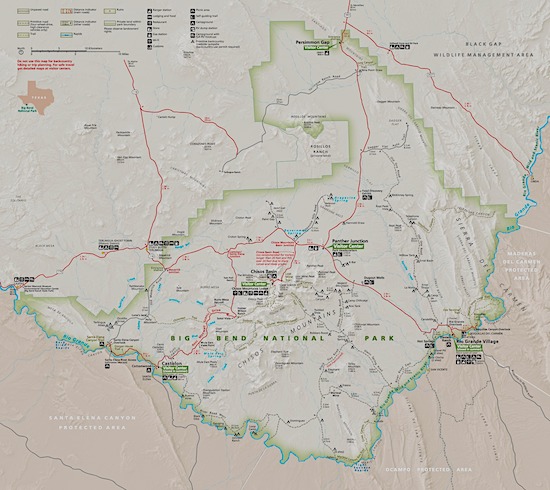 |
Road System in Big Bend National Park
Here at Road Travel America, we love to drive, preferably on quiet, uncrowded byways. In Big Bend, we have found a variety of road types, from smooth paved roads to primitive routes through river beds and canyons.
Paved Roads
More than 100 miles of paved roads throughout Big Bend National Park showcase not only gorgeous vistas, but also invite you to marvel at the geological splendor, contemplate the lives of early settlers, and observe the incredible diversity of plants and animals that call this home.
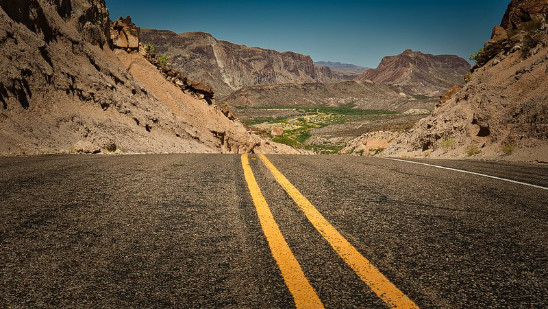 |
Taking a scenic drive can be an ideal way to explore the park if you have limited time or if weather is not conducive for other activities.
Dirt Roads
Enjoy the shift from khaki-colored desert to a forest of giant yuccas on the Dagger Flat Auto Trail, or contemplate the harsh lifestyle representative in the primitive, long-since-abandoned structure of Luna's Jacal on the Old Maverick Road. Big Bend's improved dirt roads are accessible for most vehicles, but some are rougher than others and road conditions deteriorate quickly with a passing storm. Please inquire about current conditions before venturing out along one of these roads.
Primitive Roads
Miles of primitive dirt roads lead across washboards and boulders, through canyons and creek beds, past old settlements and cemeteries. In addition to marvelous panoramic vistas, many of these roads access hiking trails, primitive roadside campsites, and the river. Primitive dirt roads are maintained for high-clearance vehicles only, and may require a 4WD. They may be rocky with areas of soft sand that are unsafe for sedans or RVs. Rain can make roads difficult to drive or impassable. Always inquire about current road conditions.
What Weather to Expect in Big Bend
Sunshine is abundant most of the year. Spring is typically warm and pleasant and is the parks busiest season. Try to avoid mid-March (Spring Break) unless you have reservations for accommodations.
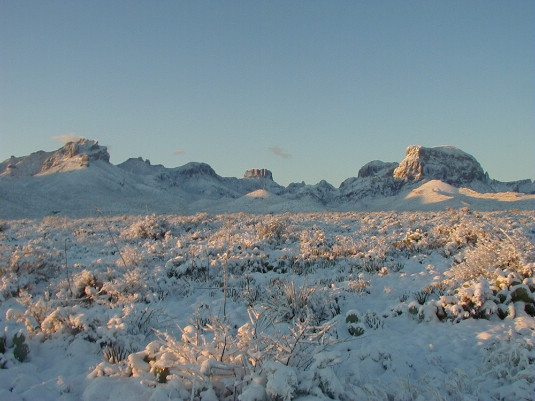 Winter weather with snow in Big Bend National Park |
Summers are hot; temperatures vary greatly between the desert floor, which is often above 100 degrees Fahrenheit, and the Chisos Mountains, which are ten to twenty degrees cooler. June-August are the hottest months. Visitors should be familiar with heat safety. The rainy season runs from May through September, with locally heavy thunderstorms and some flash flooding. The rainy season can be a delightful time to visit since afternoon and evening rains often cool the desert.
Fall quickly melds into winter which is pleasantly mild and usually sunny, although periods of cloudy weather and freezing cold do occur. Snow is rare and generally light. Winter visitors must prepare for a variety of conditions. The holidays (Thanksgiving and Christmas breaks) are typically busy, so reservations for accommodations are highly recommended.
Air temperature changes by five degrees for every 1,000 feet of elevation you gain or lose; temperatures in the high Chisos Mountains can be 20+ degrees cooler than temperatures along the Rio Grande. Be prepared for this kind of variation during your trip.
More Scenes Around Big Bend
| South Rim vista at Big Bend National Park in southern Texas (Photo courtesy of NPS) |
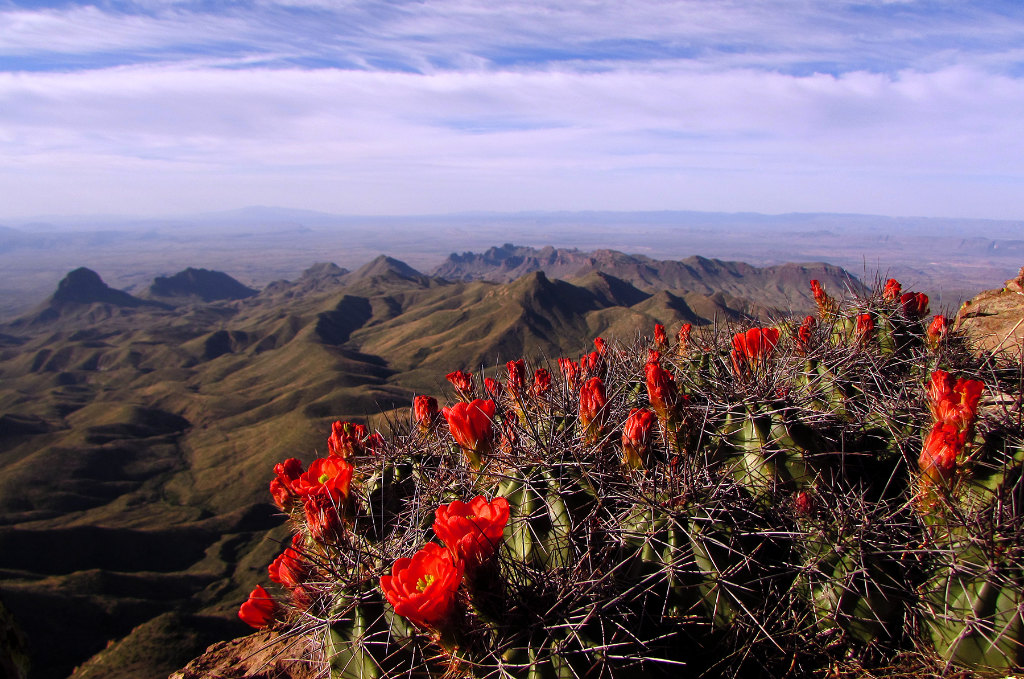 |
| Santa Elena Canyon at Big Bend National Park (Photo courtesy of NPS) |
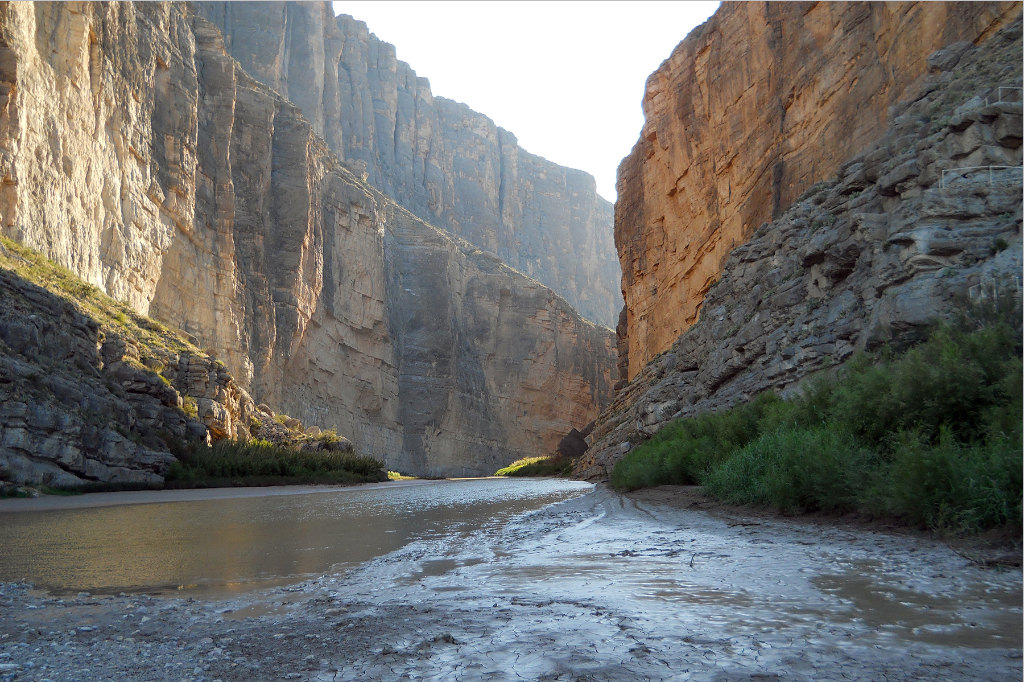 |
| The vivid colors to be seen at Big Bend National Park (Photo courtesy of NPS) |
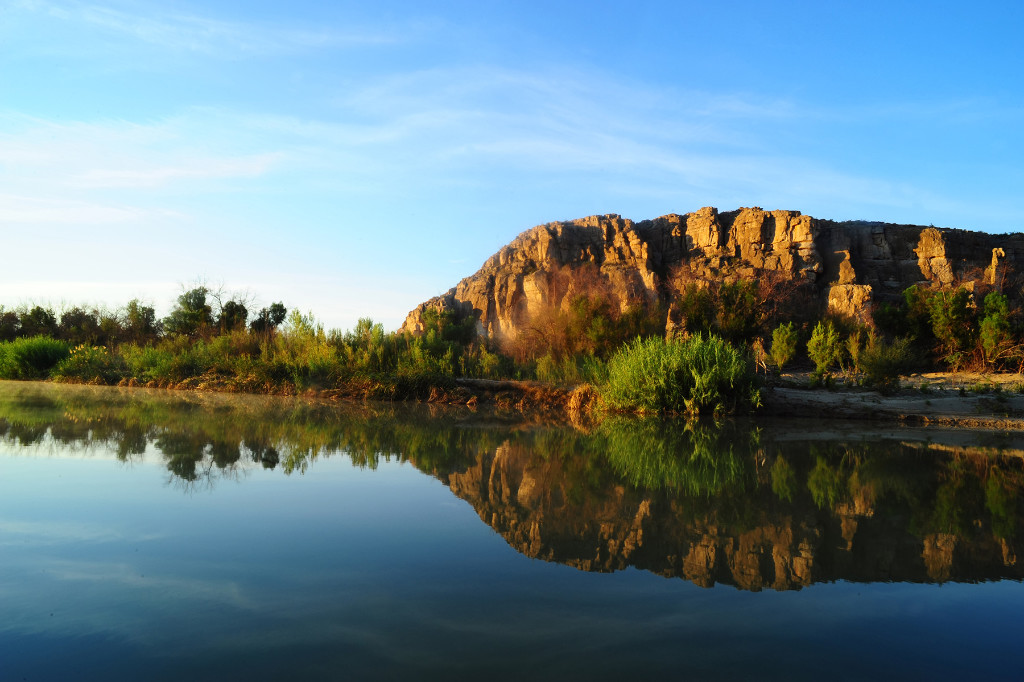 |
Crown Mountain as seen from Boot Rock (photo courtesy of the NPS)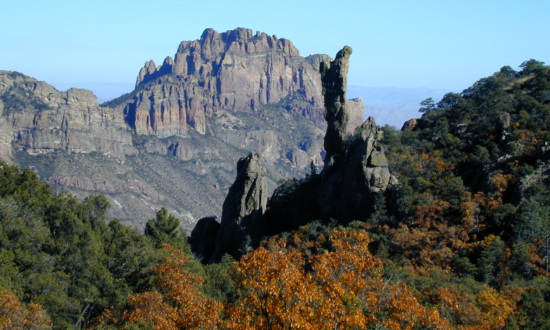 |
Other Popular Attractions and Hotels Around Big Bend
| The Marfa Lights Viewing Station, 9 miles east of Marfa on U.S. Highway 90 / 67 |
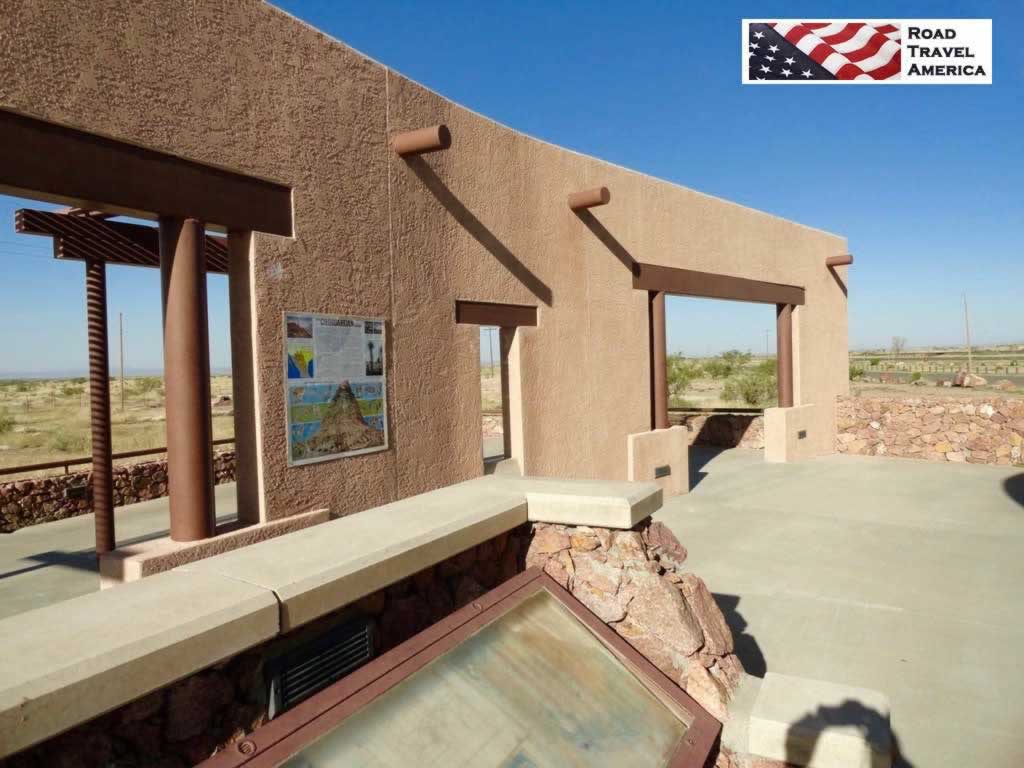 |
| Prada Marfa is a permanently installed sculpture by artists Elmgreen and Dragset, just off U.S. Highway 90 about 26 miles northwest of Marfa, near Valentine |
 |
| Entrance area to the The Hotel Paisano in Marfa, 207 N. Highland Avenue, opened in 1930 |
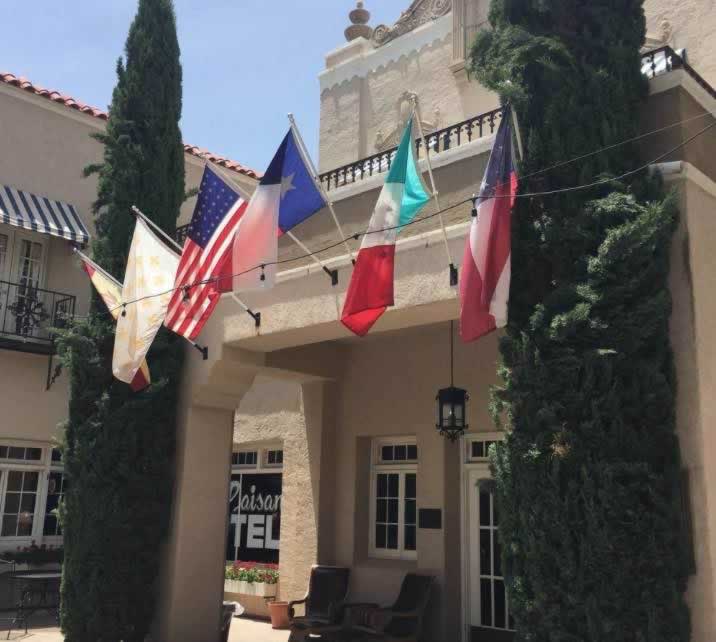 |
| The Gage Hotel at 102 E. U.S. Highway 90, Marathon, Texas |
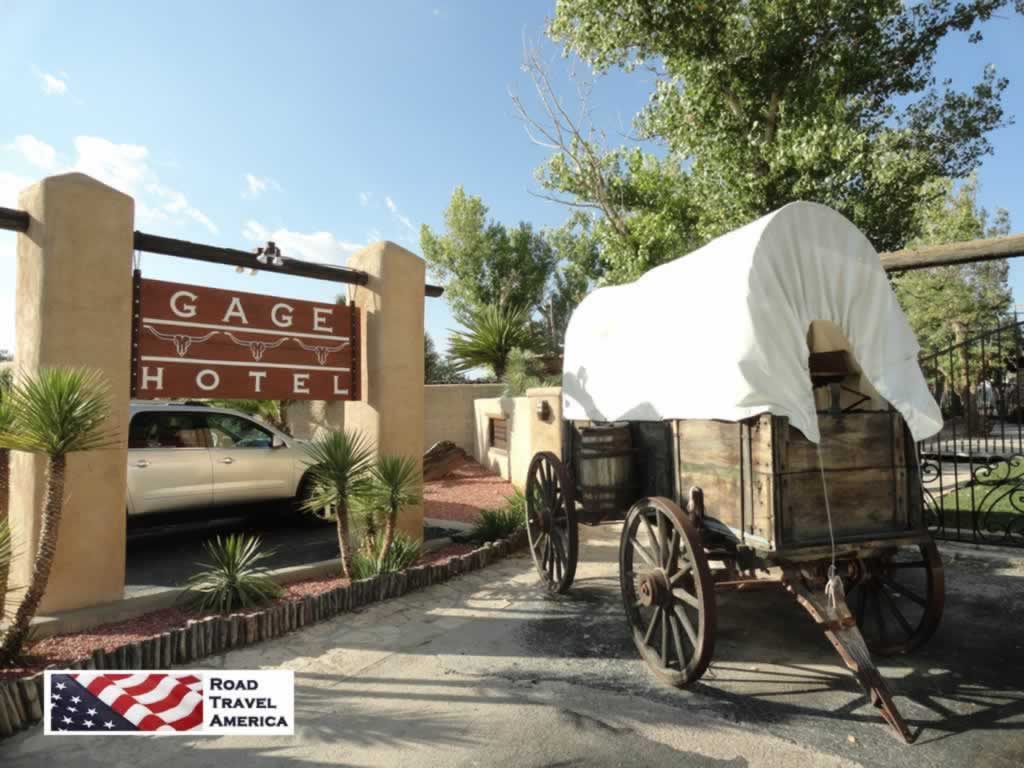 |
More Information about Big Bend
Website of Big Bend National Park at NPS
Travel Texas: Big Bend National Park
Big Bend National Park at Texas Monthly
